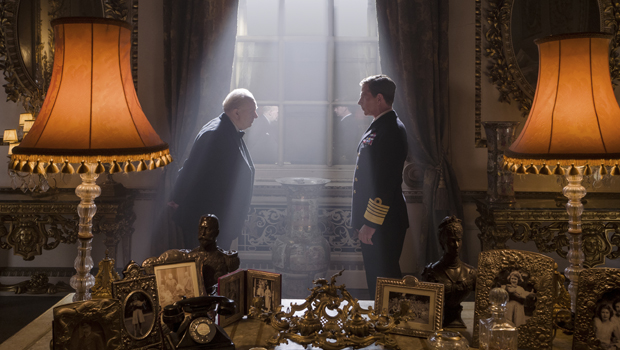PRESS AND NEWS CENTER
Sharp Visual Contrast Brings Light to Darkest Hour
Technicolor’s Peter Doyle found stylistic inspiration reteaming with the director and DP – and from studying photography and color processing from the film’s era.

- Supervising Digital Colorist Peter Doyle built a color model to emulate the processes and interpret the colors of the 1940s.
- “A very subtle hand and eye,” said director Joe Wright, enabled Doyle to capture the contrasts of a dark time during a bright, hot summer.
The WWII drama Darkest Hour details Winston Churchill’s rise to power as British Prime Minister in 1940. Effectively capturing the gravitas of the grim political, social, and economic events of the time was the job of the creative team, as Technicolor’s Supervising Digital Colorist Peter Doyle reteamed with director Joe Wright and director of photography Bruno Delbonnel, AFC, ASC.
Joining the film during pre-production, Doyle already had a good understanding of their working methods and what they hoped to achieve in terms of the emotional experience for the audience. “The whole process was very collaborative,” said Doyle. “Joe is an intensely visual director and was very clear where he felt the film should be from both a visual and narrative viewpoint. Bruno is a visionary cinematographer and it was inspiring to work with him in developing the look of the world that the film inhabits.”
Commenting on their work together, the director said, “We did the DI at Technicolor in London, with Peter Doyle, who has a very subtle hand and eye, and he does a lot of my stuff. I really enjoy that process so much…it’s always been very important to me, and exciting, and I’m pretty involved.”
From his involvement, Doyle recalls “the general feeling that it was to be a very sharp film” – something to complement Gary Oldman’s extraordinary transformation as Churchill. “There is an extreme physicality to Gary’s performance, and it was important to keep that in consideration during the grade,” he said.
Stylistically, Doyle found inspiration not only from Oldman and the filmmakers, but from photography and color processing of the period – a time harking back to Technicolor’s rich Hollywood legacy. “I built a color model to emulate the processes from the 40s…which interpreted the colors in a very beautiful way,” he said.
Watch the official and riveting international trailer from Universal Pictures.